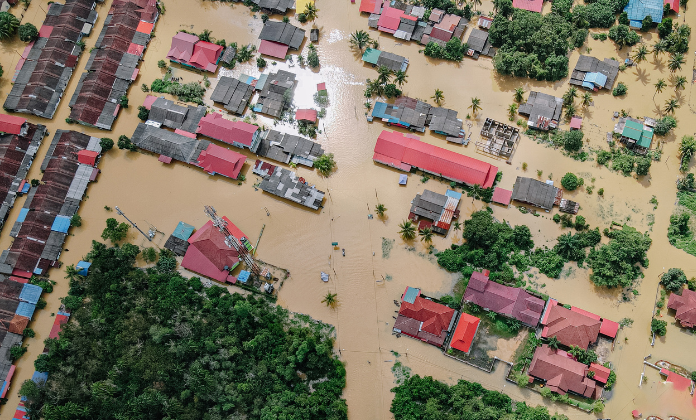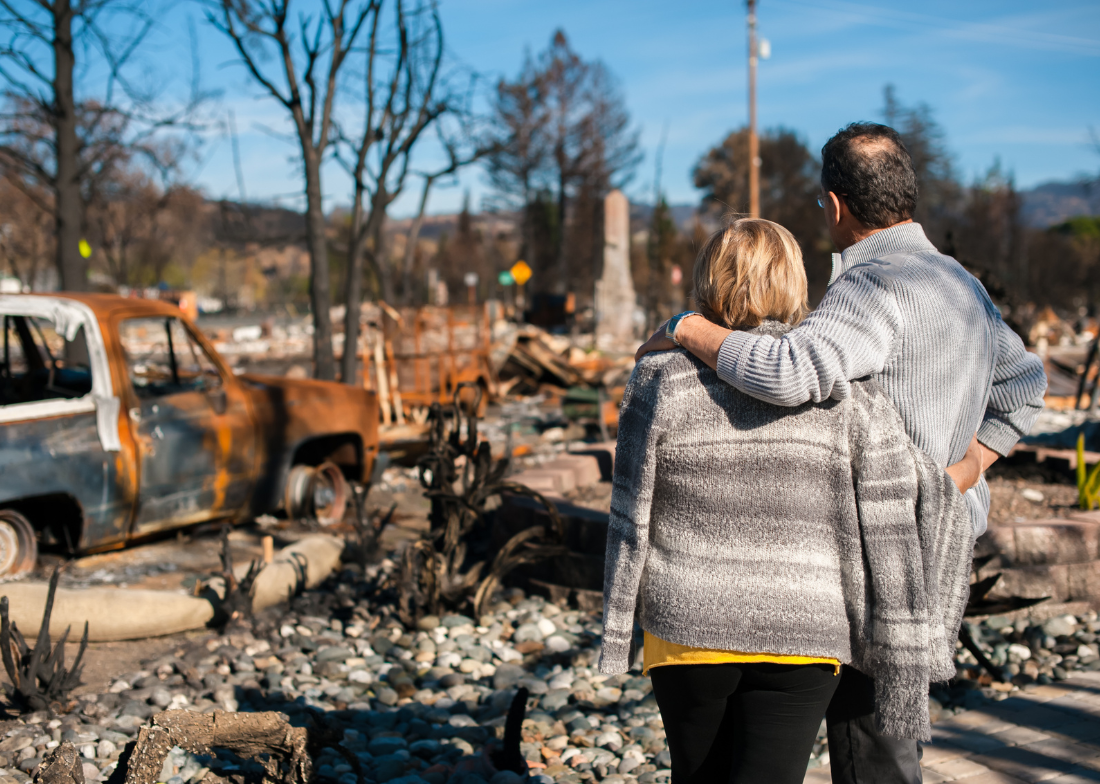Climate Migration 101
Cameron Katz, ACE Intern
|October 13, 2022

Many of the campaigns that call for climate action tend to rely on images of polar bears struggling on tiny icebergs or fish tangled in plastic pollutants. And while these pictures of a struggling natural world are certainly compelling, to discuss the climate crisis without talking about the effect on humans—especially women, people of color, and low-income communities—misses one of the most perilous climate impacts of all. As the United Nations (UN) Refugee Agency states, “The climate crisis is a human crisis.”
In some ways, this may seem obvious. All of us have witnessed intense climate disasters on the news—from Hurricane Maria hitting Puerto Rico in 2017 to deadly heat waves sweeping India this year, and so many more. These catastrophes claim lives and bring horrific damage.
Although it is easy to identify these climate disasters as a clear threat to human health, there are other ways that climate change threatens to upend lives and displace thousands, albeit more slowly. The concept, known as climate migration, is an issue that politicians have only recently begun to consider in the fight against climate change.
In many parts of the world, climate migration is already underway, so it’s crucial to understand climate migration, the communities it is more likely to affect, and how we might begin to tackle this pressing issue.
What is climate migration?
Climate migration occurs when a climate-related disaster or disturbance (e.g. flooding, hurricanes, wildfires) displaces people from their homes. In some cases, these people are unable to return to their homes due to permanent damage that renders their region inhospitable.
The issue became prominent in 2016 when President Obama recognized the impact of climate change on migration in a memorandum titled “Climate Change and National Security.” Since then, the Institute for Economics and Peace has estimated that over 1 billion people could be displaced as a result of climate change by 2050.
Already, the numbers are on the rise. According to the UN Refugee Agency, severe weather events have already caused an average of 20 million people to relocate per year. Climate refugees may be forced to deal with the challenges of immigrating to another country on top of the tragic loss of their homes and communities. For example, in the United States (U.S.), recent spikes in xenophobia position climate-displaced peoples as a national security threat, with some urging for tighter border control, which would make it even more challenging for climate refugees to find safety.
These sociopolitical factors are important to the conversation about climate migration because women, people of color, and individuals from lower-income countries are disproportionately impacted.
The Disproportionate Impacts of Climate Migration
Although wealthy countries are responsible for much of the climate crisis, these areas of the world are less likely to feel the worst of its impact. Vulnerable countries have already begun to feel the impacts of climate change. For example, in 2017, Hurricanes Eta and Iota displaced thousands in Nicaragua and Honduras. Monsoon floods in Bangladesh have forced an estimated 8 million people to flee in recent years. And in West Africa, the story is the same—only here the cause is heavy flooding and food shortages.
But the disproportionate impacts go deeper than just nationality. The UN has estimated that women make up 80% of those displaced by climate change. And the disparity is worsened for individuals with intersectional identities. For example, in the wake of Hurricane Katrina in 2005, Black women were one of the worst affected groups. Not only did these women face insurmountable damage to their homes and communities, but the emergency shelters housing them did not even have adequate numbers of necessary sanitary supplies.
Climate change will affect all of us, but some individuals will have to face worse consequences than others. The Intergovernmental Panel on Climate Change (IPCC) has predicted that countries in South Asia, sub-Saharan Africa, and Central and South America will witness the effects of climate change more intensely. And because the lasting effects of imperialism have slowed economic growth in many of these areas of the world, they are less equipped to handle climate disasters and support massive migrations away from vulnerable areas.
Finding a sustainable solution
It’s important to remember that climate migration is as much of a political problem as it is an environmental one, and we need an international structure to address the looming changes in migration. As climate change becomes more severe, the need for relocation will only become more dire. Tackling the issue of climate migration begins with a collective approach so that we are prepared to face what is already happening – and those being displaced must be included in the conversation.
Furthermore, investing in protective measures in vulnerable communities can help prevent the need for migration in the first place. Some individuals may prefer not to leave their homes and communities and face the stressors of migrating. Taking action now to protect vulnerable areas from whatever climate-related disaster that threatens them can reduce displacement and save lives.
Climate migration is a crucial but sometimes neglected topic in the conversation around climate change, and it goes hand-in-hand with many recent discussions in the social justice space. As we work together to fight the climate crisis, we must remember that not everyone will experience the impacts equally – and so we should act accordingly.
Want to read more? Check out the ACE Blog!
Join our Youth Action Network
More Blog Posts

Unnatural, Not Unprecedented
For two weeks, residents of Southern California endured a waking nightmare. Parents raced against time – hurrying down the driveway …
Read MoreCrafting a Vision for the Future: My Experience at LCOY USA 2024
Dry and sunny Tempe, Arizona where temperatures have been over 100 F for 113 consecutive days, delegates gathered to attend …
Read More
7 Ways to Weatherproof Your Home on the Cheap (+1 Not-So-Cheap)
As colder weather sets in, understanding how to weatherproof your home is key to maintaining warmth and reducing energy costs. …
Read More